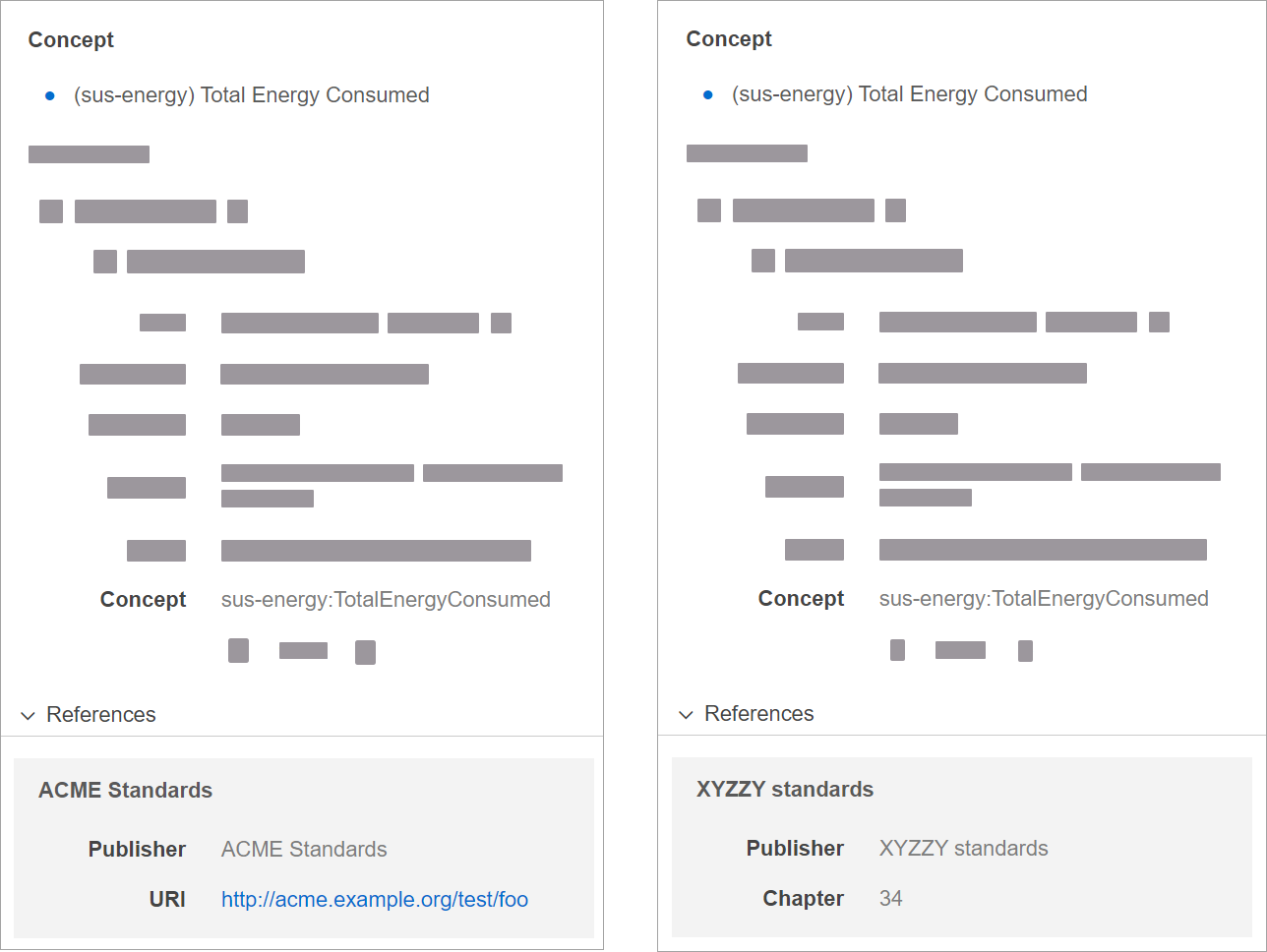Common concepts
Common concepts are taxonomy concepts that are shared so that multiple taxonomies can reuse it.
It is common for different taxonomies to collect the same information, for example, the name of the reporting entity, a list of greenhouse gases, or countries in the world. Usually, those taxonomy concepts are private, with their own labels and references, to each taxonomy. Standard setters can choose to maintain their own concepts or to use common concepts.
Maintaining similar concepts by standard setters separately leads to the following risks:
- Duplication of work and effort.
- Inconsistencies and mistakes between maintained concepts that are hard for data preparers and data consumers to understand.
For example, different spellings, translations, or inadequate references. - Additional effort put in to make the data readable for machines.
For example, consuming software needs to know that ReportingEntityName, EntityName, and NameofReportingEntity are all the same underlying concept.
XBRL standard and common concepts
To save the implementation time and effort, and establish consistency between different taxonomies, the XBRL standard provides a facility to create and reuse concepts in multiple files, including multiple concept definitions in a taxonomy. We call such concepts common concepts. Common concepts are taxonomy concepts that are shared so that other taxonomy authors can include them in their taxonomies.
Anyone involved can use the XBRL standard to create a micro taxonomy containing concepts that can be shared between multiple standard setters. XBRL International is prepared to facilitate and host these micro-taxonomies as part of an initiative known as the Global Taxonomy Concept Registry (GTCR).
When standard setters use common concepts in their taxonomies, they can apply their own labels and references to them without changing the common concept. Companies will then report data against the standards setters’ taxonomies that reference the common concepts.
Diagram explaining how common concepts are implemented
Example
Two companies, CarMaker and VanBuild, prepare their sustainability reports.
CarMaker report (iXBRL format)
VanBuild report (iXBRL format)
In the reports, the companies want to disclose information about their energy consumption. Each company reports against different standards - CarMaker reports against ACME Standards, and VanBuild reports against XYZZY standards.
When creating their taxonomies, standard setters for both taxonomies noticed an opportunity to use a common concept - Total Energy Consumed, published in the sus-energy taxonomy.
Total Energy Consumed common concept used in the CarMaker report (iXBRL format)
Total Energy Consumed common concept used in the VanBuild report (iXBRL format)
Both taxonomies used the Total Energy Consumed common concept. It allows the companies to report their data against the same common concept. However, since each report discloses against different taxonomies, the common concept in each taxonomy has references specific to each respective standard.

A single common concept with different references
More detail
Use common concepts
Standard setters and taxonomy authors decide whether they want to use common concepts. When they work on a taxonomy and identify parts that could be a common concept, they should check if there is a common concept they could reuse.
If there are no common concepts they need, they can do one of the following:
- Contact XBRL International to update the list of common concepts.
- Log in to the global taxonomy concept registry and create a merge request to update the list of common concepts.
We strongly encourage standard setters and taxonomy authors to read and be familiar with the list of common concepts shared by XBRL International.
Add common concepts to your taxonomy
Technical implementers update and add the references of their taxonomies to point to the common concepts. When a common concept is used, technical implementers decide whether they want to use the label and reference supplied with the common concepts or have their own labels and references.
Shared and customisable
Multiple standards share the same common concepts. After pulling common concepts to their own taxonomies, standard setters can apply their own labels and references. It allows standard setters to adjust the concepts to their needs.
Whenever common concepts are updated, the taxonomies that use the common concepts update automatically. Updating common concepts does not remove the standard-specific labels and references.